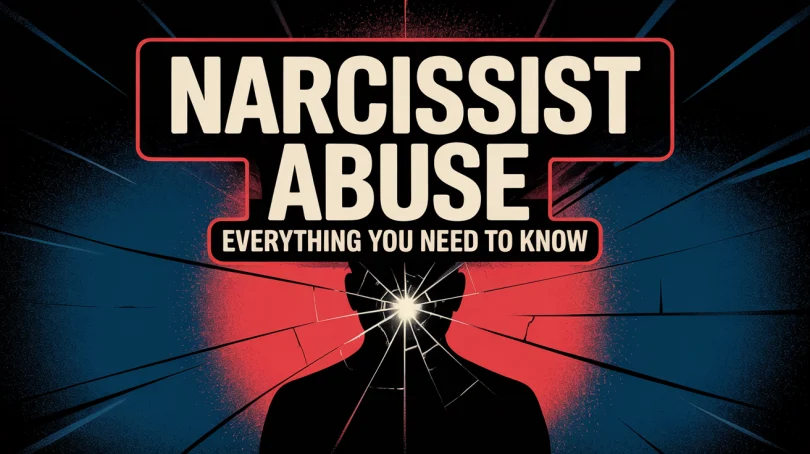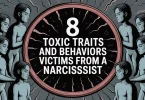Do you remember a time when it felt as if no amount of effort was ever going to seem good enough for someone? It always seems as if this person will always manage to pick at something, no matter how much you try to offer them, resulting in you feeling inadequate. If you find yourself reading this, it is safe to assume that you have undergone something like this before.
Perhaps you have experienced guilt along with confusion whilst entertaining the thought of “Am I losing my mind?” These experiences are more frequent than we expect and almost always come with a label, that we tend to ignore: abusive narcissism. This feels similar to being stuck in a never-ending loop, where no matter how hard you try to break free, it feels like you’re being sent back to the start instead.
An increasing number of people around the world suffer from abusive narcissism. Emotional manipulation, psychological control, and social isolation only to name a few is what abuse of this type looks like. The aftermath of such abuse is complete identity loss and concealed trust issues for victims, leading to severe trauma. It is my goal in the article to slowly unravel this subject to bring light to the fact that no, you were never in the wrong. If you stay until the end with me, we can walk together through these dark paths and transform the pain into something empowering.
What Is Narcissistic Abuse?
Narcissistic abuse, like all other abuse, goes beyond mere personality problems or difficult relationships. It is a destructive pattern created by deep emotional violence, psychological oppression, and the subservient use of others to indulge one’s ravenous self-centered appetite. Although the words might sound clinical, the repercussions on the lives of victims is thorough, with agony that is often unnoticed and unacknowledged by everyone, save for the victim.
Abuse goes deeper than screaming and physical violence; it also dwells in cold silences filled with malicious intent and. carefully crafted language that seeks to neutralize. Individuals displaying extreme narcissistic traits or even those with Narcissistic Personality Disorder (NPD) develop relationships rooted heavily in control and subjugation. Such people do not regard other people as complete human beings, but as fragments of themselves to fus entitled to obliterate.
How Narcissists Try to Control You?
8 Signs You’re in a Narcissistic Relationship
How narcissists exploit innocent victims?
This type of abuse can occur in different areas of life: in the family environment, where children grow up under the weight of unrealistic expectations or parents who constantly invalidate their emotions; in romantic relationships, where a partner becomes trapped in a vicious cycle of idealization and destruction; or even in professional settings, where coworkers or bosses use intimidation and control tactics to maintain their position of superiority.
The Complexity and Impact of Narcissistic Abuse
Narcissistic abuse doesn’t just destroy relationships it fragments the victim’s identity, leaving deep scars that can take years to heal. The complexity of this topic lies in its duality: on one hand, there’s the attempt to understand the abuser’s motivations, which often stem from unresolved trauma; on the other, there’s the devastating impact on the victim, who faces a grueling process of emotional reconstruction.
Understanding this dynamic is the first step in identifying warning signs before the damage becomes irreversible. It’s not just about the abuser but also about the system of control they create around themselves a power game where the victim often feels powerless, confused, and unable to escape. The good news? By better understanding how this mechanism works, we begin to see ways to disrupt it and bring light to what once seemed impossible to decipher.
Who Can Be Affected by Narcissistic Abuse?
Characteristics of narcissistic abuse have no bounders. It spans across age, gender, social spheres, and even cultures. Anyone who has the misfortune of brushing shoulders with a narcissist becomes susceptible to narcissistic traits become susceptible. Children, adults, men, women, and even office employees all fall prey to this abuse. It does not take a strong or a weak person to be trapped in this emotional maze devoid of any signposts.
As children, they are likely to face harsh expectations along with feeling invalidated as a result of having narcissistic guardians. Adults find themselves trapped in what initially appears to be a captivating whirlwind romance, only to realize they are ensnared by a narcissistic partner. Some face bullying or harassment by narcissistic colleagues, who resort to employing domineering ‘power’ techniques.
Making matters worse is the staggering amount of people encountering the problem, and it not being legal makes it worse. The disguise of abuse is so elaborate that victims do not recognize the torment they are subjected to. Explanations like “It’s for your good,” or “You know that I care,” raise a lot of concern and manipulative intent is quite evident.
Types of Narcissists and Their Characteristics
Not all narcissists behave the same way there are different profiles, each with its peculiarities, but they all converge on one point: the devastating impact they have on their victims. Recognizing these types can be the first step in identifying warning signs before the damage becomes irreversible.
- The Grandiose Narcissist: This type loves being the center of attention and flaunts their supposed superiority. They’re charismatic at first but exhausting over time due to their constant need for validation.
- The Covert Narcissist: Known as the “wolf in sheep’s clothing,” they disguise their intentions under a facade of vulnerability and kindness, creating an emotional trap where victims feel compelled to save them.
- The Cerebral Narcissist: They position themselves as intellectually superior, belittling others’ opinions and using their supposed intelligence as a weapon.
- The Communal Narcissist: They cultivate a flawless public image through charitable or community activities, masking abusive behaviors behind a shield of positivity.
- The Malignant Narcissist: This profile may include sadistic traits, deriving satisfaction from others’ suffering and deliberately inflicting pain.
Understanding these profiles helps us see that narcissistic abuse isn’t just about personality traits it’s about a complex dynamic of power and control that must be dismantled.
The Cycle of Narcissistic Abuse
The narcissistic abuse cycle is a repetitive dynamic that keeps victims trapped in an emotional web. It conditions them to believe the abuser’s behavior is normal or deserved. Here are its key stages:
- Lovebombing: An initial period of intense seduction and idealization where the narcissist makes the victim feel special and valued to gain trust.
- Devaluation: Praise turns to criticism, isolation, and manipulation, with tactics like gaslighting making the victim doubt their reality.
- Discard: The narcissist abruptly ends the relationship when the victim no longer serves their interests, often smearing them to maintain their image.
- Hoovering: The abuser attempts to lure the victim back with promises of change or guilt-tripping, preying on their emotional vulnerability.
Additional mechanisms like social isolation, triangulation, and gaslighting sustain the cycle, reinforcing emotional dependency and crushing self-esteem. This pattern repeats, intensifying trauma with each turn.
Consequences of Narcissistic Abuse on Victims
Sustained narcissistic abuse activates what is considered a trauma chain reaction and impacts every facet of a victim’s life, emotionally, mentally, and physically. Victims routinely place the blame on themselves for the relationship issues, internalizing guilt. The combination of humiliation and gaslighting increases the likelihood of developing depression, anxiety, or PTSD.
Self and mutual trust are eroded through manipulation, resulting in indecision, sleep disturbances, and chronic conditions like pain or eating disorders. Victims feel isolated and perpetually lonely as worsening social withdrawal deepens self-esteem struggles. In addition, practical challenges such as financial conflicts or existential crises worsen the already dire situation.
Time and support aid in healing; however, underestimating the impact of narcissistic abuse greatly impedes recovery.
The Origins of Narcissism
To better comprehend narcissistic abuse, we must examine its roots. One theory links Narcissistic Personality Disorder (NPD) to childhood trauma abuse, neglect, or overly critical parenting. To survive, the child creates a “false self” as a shield, which becomes a prison preventing genuine connections. Genetic factors and conditional love in childhood may also contribute, to fostering a validation-seeking mindset.
Narcissists seek a “narcissistic supply” to sustain their fragile ego, exploiting others to fill an emotional void. Understanding this reveals their insecurity, empowering victims to see the problem lies with the abuser’s unresolved wounds, not them.
Identifying the Warning Signs
Narcissists are masters at masking intentions, but clear signs can uncover their behavior:
- Lovebombing: Excessive attention and flattery to create dependency.
- Gaslighting: Phrases like “You’re overreacting” to destabilize your reality.
- Silent Treatment: Ignoring you to punish and control.
- Triangulation: Introducing third parties to create jealousy.
- Emotional Invalidation: Dismissing your feelings with statements like “You’re dramatic.”
Financial control and critical behavior toward others also signal abuse. Recognizing these patterns early is key to protecting yourself.
Strategies for Liberation
Breaking free from narcissistic abuse is challenging but transformative. Here are practical strategies:
- No Contact: Cut all communication to stop the abuser’s control. Block numbers, avoid shared spaces, and seek legal help if needed.
- Professional Support: Therapy and support groups rebuild self-esteem and process trauma.
- Reconnect: Rebuild ties with friends and family for a safety net.
- Self-Care: Prioritize exercise, nutrition, sleep, and hobbies to rediscover your identity.
Recovery is gradual, but each step toward freedom builds resilience and authenticity.
A Call to Hope and Healing
Reaching the end of this journey may feel overwhelming, but healing and liberation are possible. Narcissistic abuse leaves deep scars, but it doesn’t define you. Through self-care, support, and small victories, you’ll glimpse a free, whole version of yourself. The path is hard, but every step makes the light ahead brighter. You are more than your pain you are light. Never forget to shine.







Leave a Comment